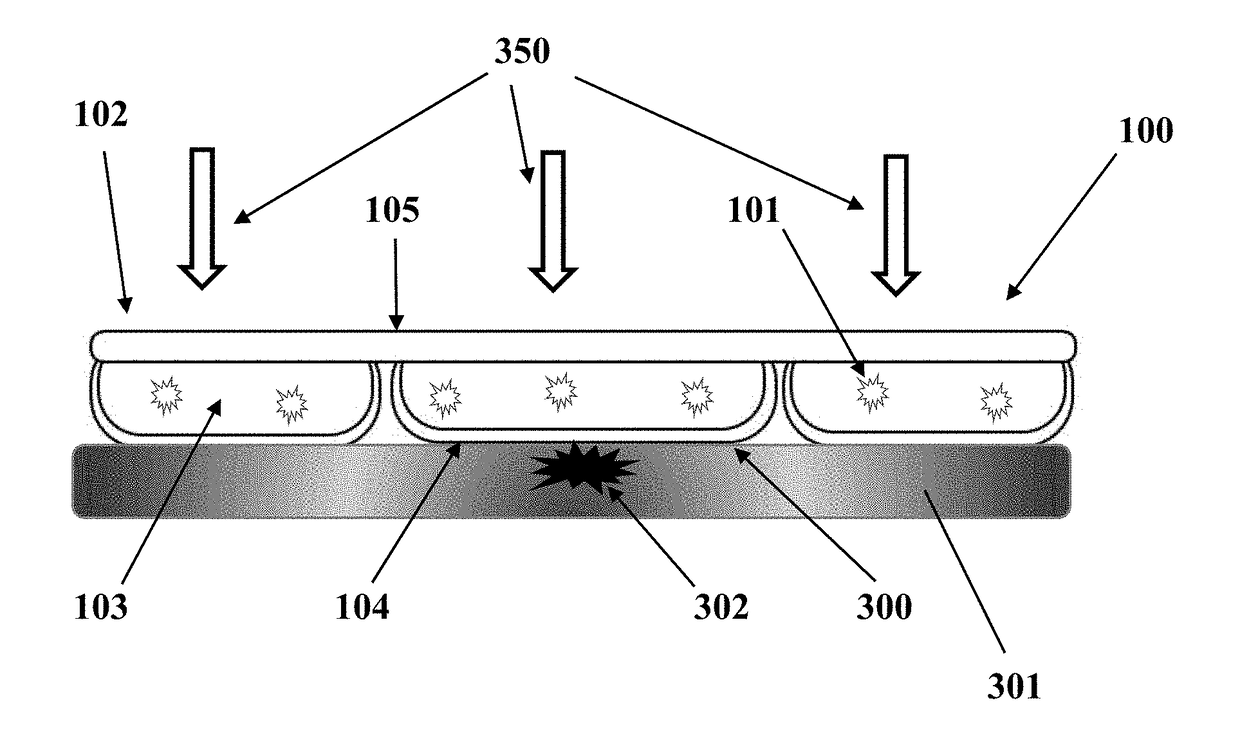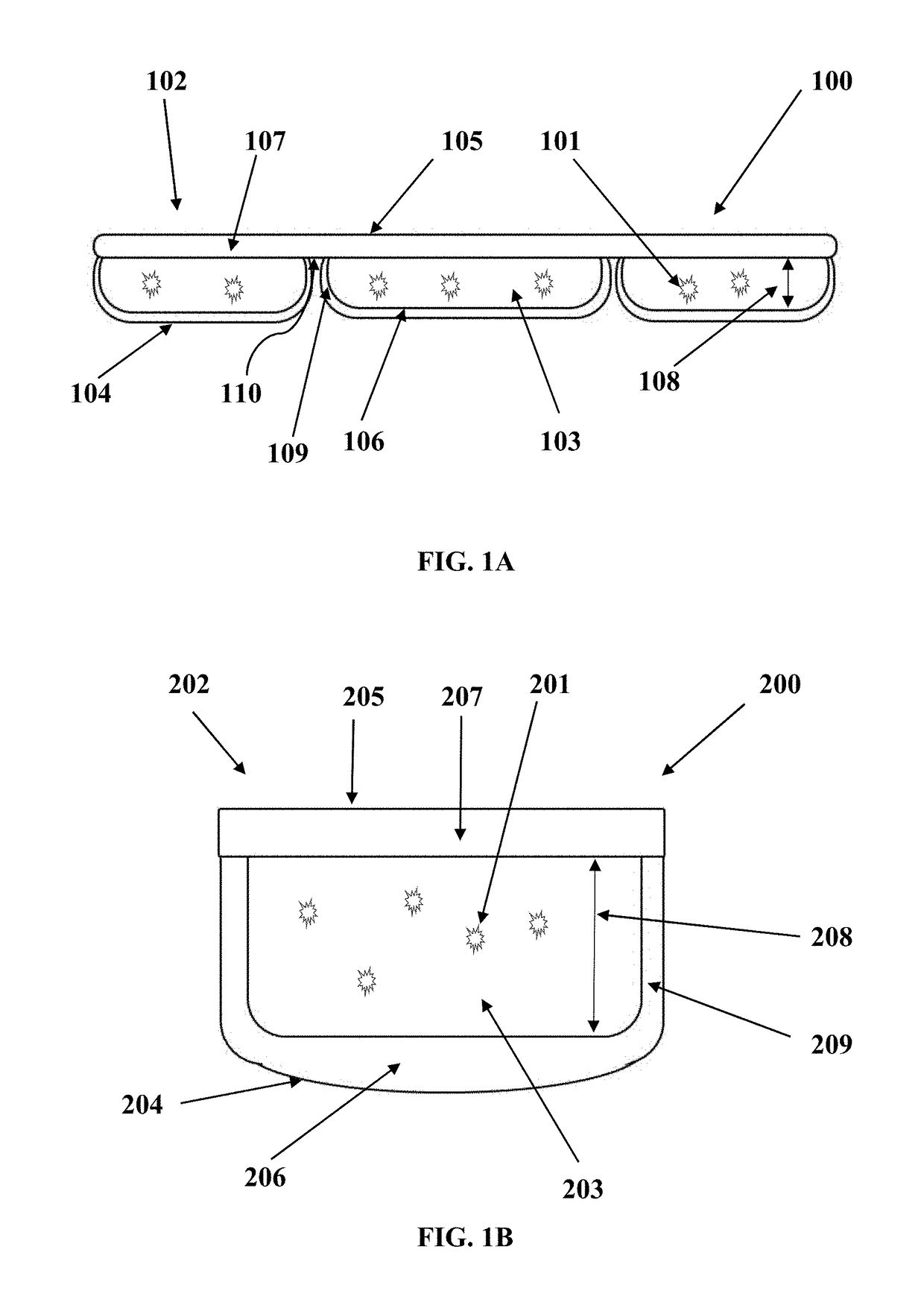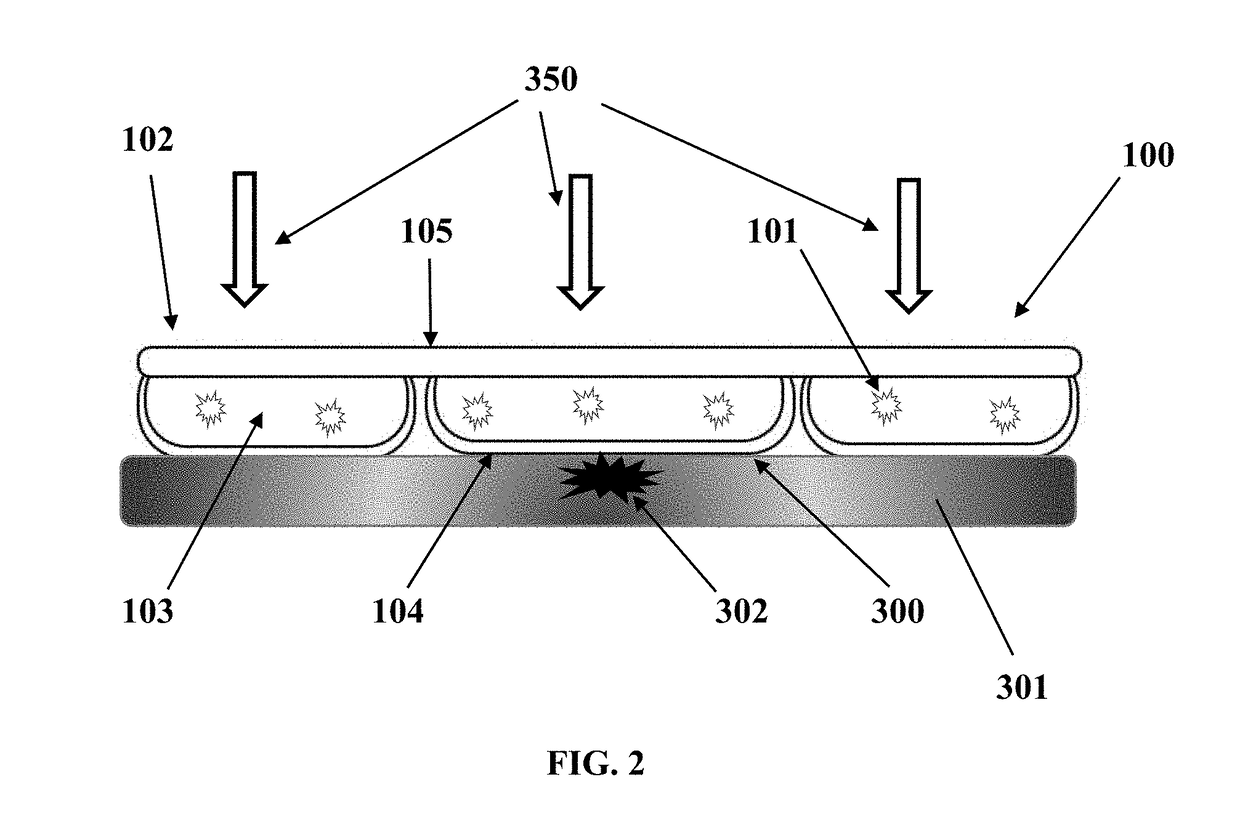Temperature and Visibility Regulated Therapy Device
a technology of visibility regulation and therapy device, which is applied in the direction of contraceptive devices, therapeutic heating, therapeutic cooling, etc., can solve the problems of ineffective clinical goals, additional injuries, serious permanent damage to tissues, skins and nerves, etc., and achieves the effect of ensuring transparency, retaining hem transparency, and being easy to enjoy
- Summary
- Abstract
- Description
- Claims
- Application Information
AI Technical Summary
Benefits of technology
Problems solved by technology
Method used
Image
Examples
example 2
[0096]This example utilizes the same transparent flexible cooling container with the same interface thickness and top film thickness as in EXAMPLE 1. The formulation is different, that is, 60% glycerol by volume and 40% DI water by volume, also with pH adjustment by triethanolamine and thickener Carbomer 940. Temperature recording for this formulation under same testing conditions are as follows: At 5 minutes, the digital thermometer reads 10.9° C., at 10 minutes 9.5° C., at 20 minutes 10.2° C., at 30 minutes 12.3° C. and 60 minutes 17.5° C.
[0097]EXAMPLE 3 utilizes a transparent rigid cooling device. The HEM Container has a slightly oval surface at length of 6.2 cm and width 4.0 cm (Refer to its cross-sectional view in FIG. 1B). The height of this coolant container is 3.5 cm. The rigid coolant container is made of polycarbonate material and the interface thickness is 0.9 mm. The HEM for this application is propylene glycol and water mixture at the volume ratio of 30% and 70% respect...
PUM
 Login to View More
Login to View More Abstract
Description
Claims
Application Information
 Login to View More
Login to View More - R&D
- Intellectual Property
- Life Sciences
- Materials
- Tech Scout
- Unparalleled Data Quality
- Higher Quality Content
- 60% Fewer Hallucinations
Browse by: Latest US Patents, China's latest patents, Technical Efficacy Thesaurus, Application Domain, Technology Topic, Popular Technical Reports.
© 2025 PatSnap. All rights reserved.Legal|Privacy policy|Modern Slavery Act Transparency Statement|Sitemap|About US| Contact US: help@patsnap.com



